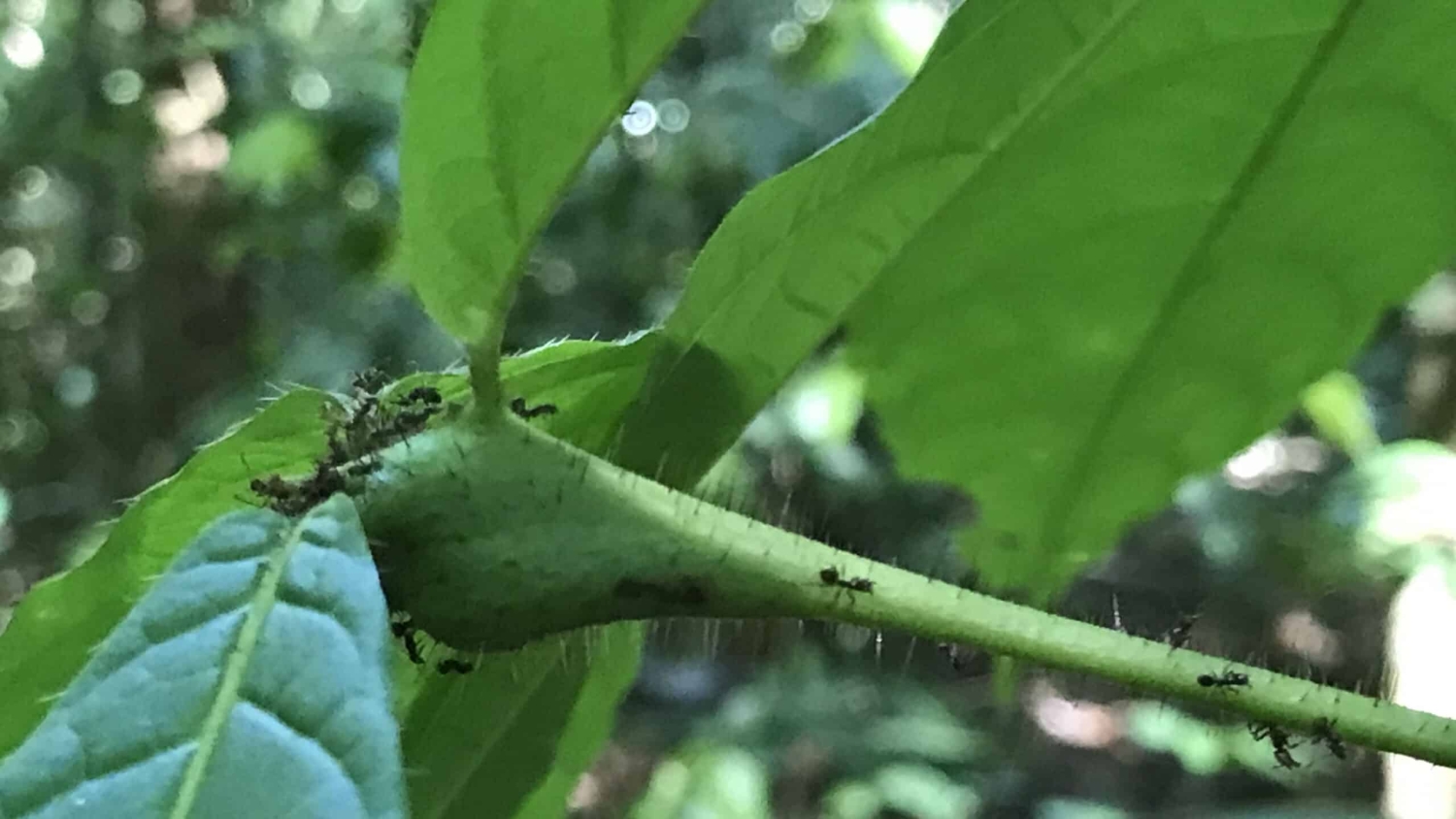Study Finds Mutualistic Relationships Changing With Climate

A new North Carolina State University study finds that climate change could be destabilizing the mutualistic relationships between insects and plants. The findings could portend the future fracturing of symbiotic relationships that underpin healthy ecosystems.
In the study conducted in South America, NC State and Peruvian researchers examined the beneficial relationship between certain ant species and tropical shrubs (Cordia nodosa) that house the ants in exchange for defense against plant-eating pests.
The researchers compared the mutualistic relationships between these tropical shrubs and ants in five urban sites and five protected forest sites to understand how they differed. Particular attention was paid to the various species of ant living in hollow portions of the shrubs and how well they tolerated heat – a typical feature of urban environments.
The results showed that urban plants were not defended well by their ant dwellers, which were mostly opportunistic ants not normally associated with C. nodosa plants.
Ants that specialize in this beneficial relationship were still associated with C. nodosa plants in forests, however.
Opportunistic urban ants lived up to their description, generally refusing to come to the plant’s aid when threatened with a finger flick from one of the researchers. The mutualistic ants in forest areas were 13 times more likely to respond to a threat an expected result.
Unexpectedly, urban plants weren’t decimated without their normal protector ants. Herbivory was relatively low in urban areas.
“I think that probably the herbivores themselves are not doing great in the city, whether it’s because of habitat fragmentation, the temperature or whatever’s keeping those specialist ants out may also be keeping the herbivores out,” said Elsa Youngsteadt, associate professor of applied ecology at NC State and corresponding author of a paper describing the research. “It’s also possible that urban plants have upped their defenses in another way.”
Meanwhile, in forests, plants without their protective ants showed higher rates of herbivory – a more expected result.
Youngsteadt added that the research showed a clear urban heat island effect: the urban areas were about 1.6 degrees Celsius warmer than the forest areas. It also showed that urban ants were, on the whole, more heat-tolerant than forest ants.
“While this study provides a small snapshot of what we may be able to expect in the future with global change, there remain many unanswered questions,” said Sara Prado, co-author of the paper and an adjunct assistant professor of applied ecology at NC State. “If urban plants do not need ants to protect them, are there any detrimental effects from them being colonized by these opportunistic ants? What is happening with the herbivores? If these changes also play out in forests in the future, we may see more examples of specialized mutualistic interactions changing or disappearing altogether.”
The paper appears in the journal Ecology.
The research was supported by Fondo Nacional de Desarrollo Cientifico, Tecnologico y de Innovacion Tecnologica (Peru) Grant Number 059-2021-FONDECYT and a North Carolina State University Internationalization Seed Grant.
-kulikowski-
Note to editors: The abstract of the paper follows.
“Urbanization drives partner switching and loss of mutualism in an ant-plant symbiosis”
Authors:, Elsa Youngsteadt and Sara Guiti Prado, North Carolina State University; Alexandra Karlyz Duran Aquino, Joel Pena Valdeiglesias, Therany Gonzales Ojeda and Jorge Santiago Garate Quispe, Universidad Nacional Amazonica de Madre de Dios, Peru
Published: Oct. 14, 2024 in Ecology
DOI: 10.1002/ecy.4449
Abstract: Mutualistic interactions between species underpin biodiversity and ecosystem function, but may be lost when partners respond differently to abiotic conditions. Except for a few prominent examples, effects of global anthropogenic change on mutualisms are poorly understood. Here we assess the effects of urbanization on a symbiosis in which the plant Cordia nodosa house ants in hollow structures (domatia) in exchange for defense against herbivores. We expected to find that mutualist ants would be replaced in the city by heat-tolerant opportunists, leaving urban plants vulnerable to herbivory. In five protected forest sites and five urban forest fragments in southeast Peru , we recorded the identity and heat tolerance (CTmax) of ant residents of C. nodosa. We also assayed their plant-defensive behaviors and their effects on herbivory. We characterized the urban heat-island effect in ambient temperatures and within domatia. Forest plants housed a consistent ant community dominated by three specialized plant ants, whereas urban plants housed a suite of 10 opportunistic taxa that were, collectively, about 13 times less likely than forest ants to respond defensively to plant disturbance. In the forest, ant exclusion had the expected effect of increasing herbivory, but in urban sites, exclusion reduced herbivory. Despite poor ant defense in urban sites, we detected no difference in total standing herbivory, perhaps because herbivores themselves also declined in the city. Urban sites were warmer than forest sites (daily maxima in urban domatia averaged 1.6C hotter), and the urban ant community as a whole was slightly more heat tolerant. These results illustrate a case of mutualism loss associated with anthropogenic disturbance. If urbanization is representative of increasing anthropogenic stressors more broadly, we might expect to see destabilization of myrmecophytic mutualisms in forest ecosystems in the future.